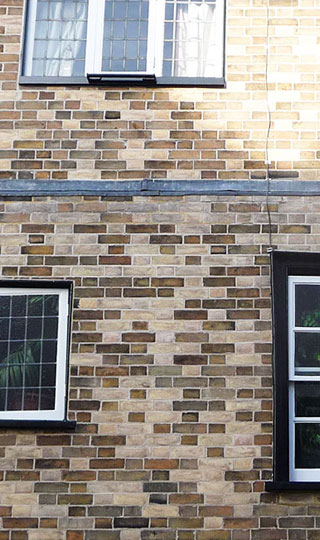


Mathematical tiles, or brick tiles, are another form of tile cladding that when hung on a vertical face of a building have the appearance of brickwork. It is thought that mathematical tiling was originally introduced to improve the appearance of old buildings, although they may have been a way of avoiding the Brick Tax of 1784. They also helped to weatherproof old timber-framed buildings as they form a weatherproof skin.
It is estimated that there are only one thousand properties with mathematical tiles in England, the earliest precisely dated example is 1724. Many of these buildings are located in Kent and Sussex. There are 150 buildings in the medieaval City of Canterbury hung with mathematical tiling, and individual examples in Whitstable and Herne Bay.
Mathematical tiles are a good imitation of brick and are often mistaken for solid brickwork. However the effect could be lost at angles, corners and window openings until tiles with mitred ends and angle tiles were developed so they could be joined together to overcome this Mathematical tiles were manufactured to match bricks and are available in a variety of colours ranging from light reds and oranges to buff, grey and yellow. A lime putty mortar should be used to bed the tiles.
Their use dates predominantly from the Georgian period, but they continued through the Victorian period and are still occasionally used today as an attractive finish.
Heritage Brickwork Restoration are very pleased to offer mathematical tiling as one of their traditional and highly specialist skills.


